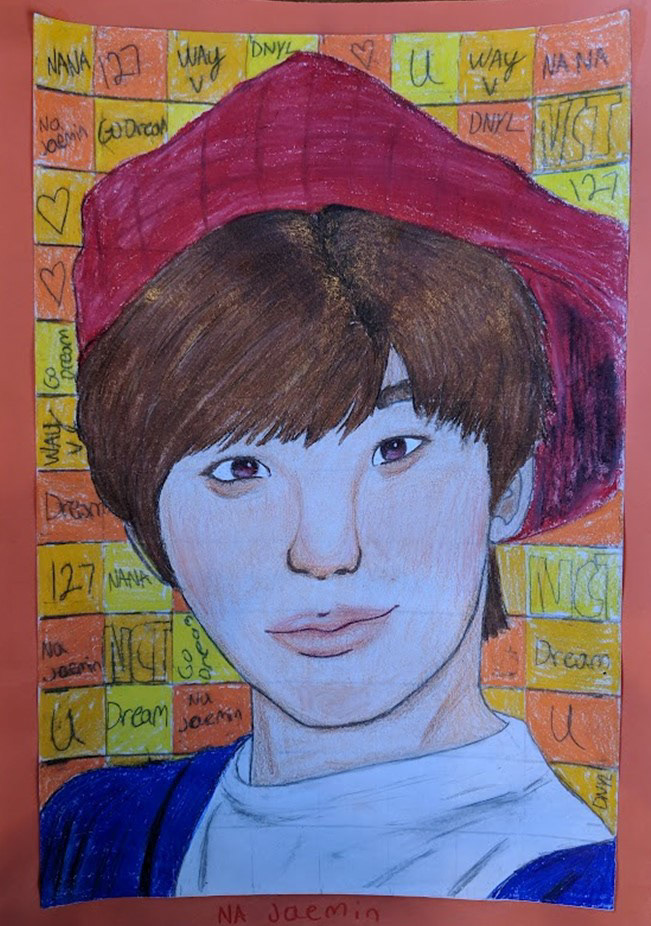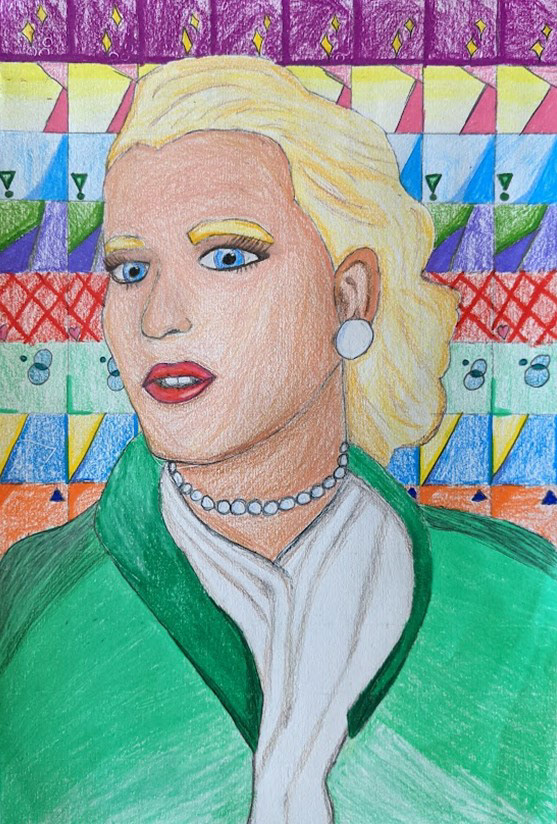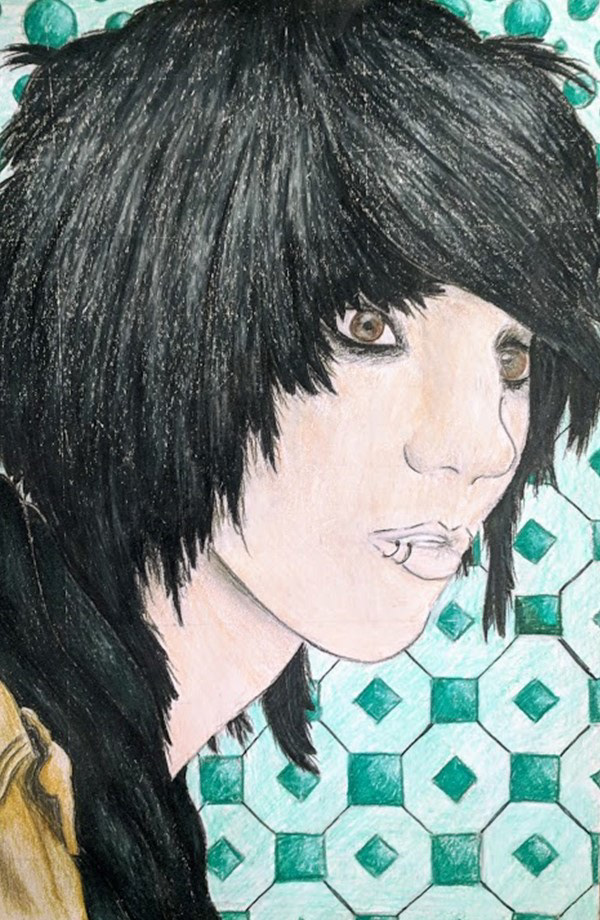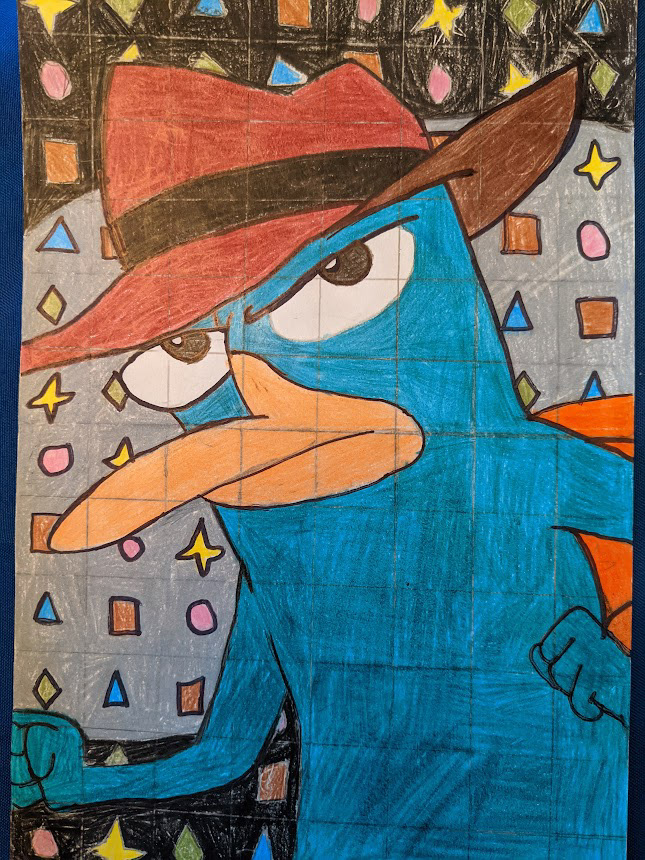Ceramic Face Mugs
I can join clay properly.
I can create a face mug using clay.
Objectives:
Students will learn about the history of face jugs.
Students will design their own face mug.
Students will demonstrate joining clay properly.
Essential Questions:
What is a face jug?
How are face jugs made?
How do we join clay properly?
How do we glaze properly?
Students will learn about the history of face jugs.
Students will design their own face mug.
Students will demonstrate joining clay properly.
Essential Questions:
What is a face jug?
How are face jugs made?
How do we join clay properly?
How do we glaze properly?
Vocabulary:
Face jug, Score, Slip, Glaze
Face jug, Score, Slip, Glaze


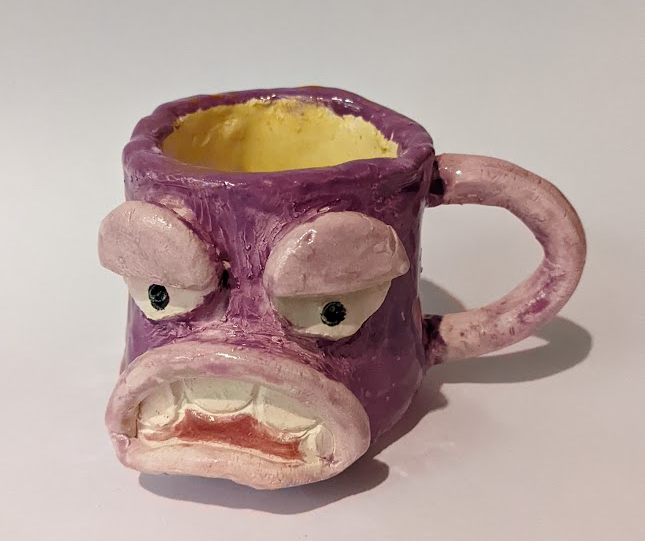
Asymmetrical Chalk Pastel Landscape
I can create an asymmetrical landscape.
I can demonstrate 5 chalk pastel techniques.
Objectives:
Students will design an asymmetrical landscape.
Students will show foreground, middleground, and background.
Students will study 9 chalk pastel techniques and use 5 in their artwork.
Students will design an asymmetrical landscape.
Students will show foreground, middleground, and background.
Students will study 9 chalk pastel techniques and use 5 in their artwork.
Essential Questions:
What does asymmetrical mean?
How do artists show foreground, middleground, and background in a landscape?
What are different chalk pastel techniques?
How can we use different chalk pastel techniques to make different effects for our landscape?
What does asymmetrical mean?
How do artists show foreground, middleground, and background in a landscape?
What are different chalk pastel techniques?
How can we use different chalk pastel techniques to make different effects for our landscape?
Vocabulary:
Asymmetrical, Foreground, Middleground, Background
Asymmetrical, Foreground, Middleground, Background
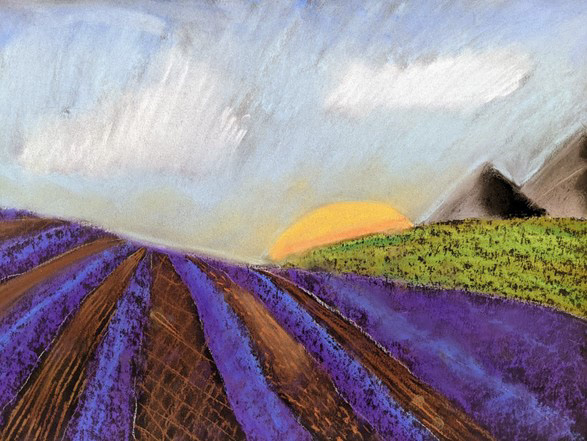
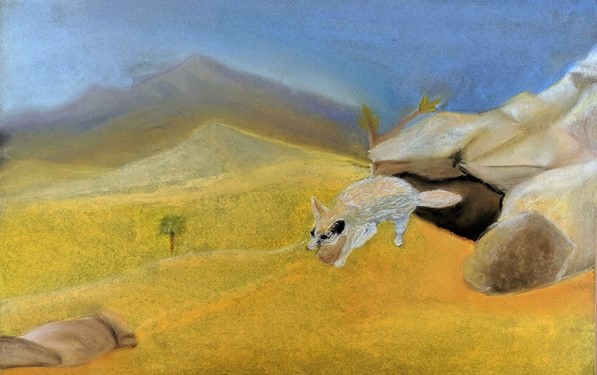
Romero Britto Metal Embossing
I can emboss metal.
I can demonstrate pattern and unity.
Objectives:
Students will study the artist Romero Britto and his use of pattern.
Students will emboss metal properly.
Students will show pattern and unity in their work.
Students will study the artist Romero Britto and his use of pattern.
Students will emboss metal properly.
Students will show pattern and unity in their work.
Essential Questions:
What is Romero Britto’s style?
How do we emboss metal?
How can we strategically use pattern and show unity?
What is Romero Britto’s style?
How do we emboss metal?
How can we strategically use pattern and show unity?
Vocabulary:
Emboss, Pattern, Unity
Emboss, Pattern, Unity
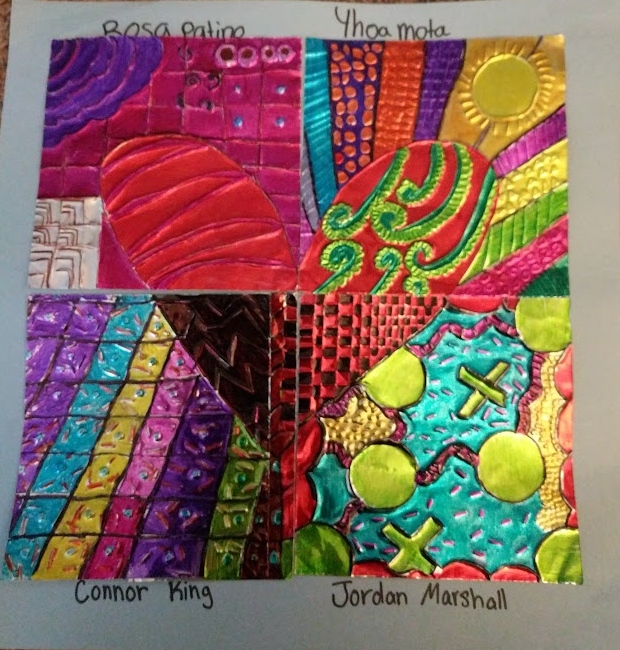

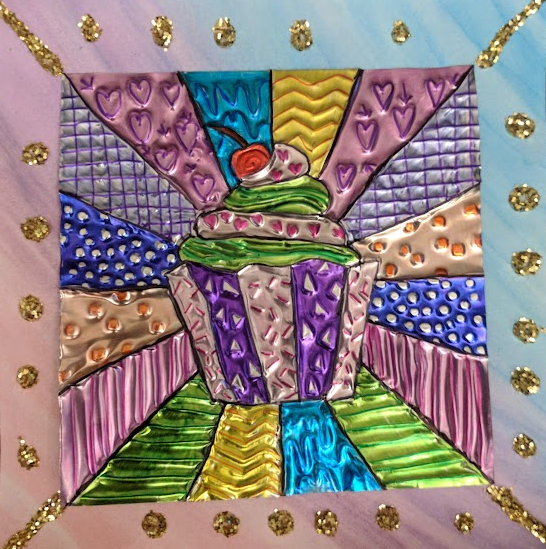
Character Design and Comics


I can create a character turnaround.
I can design a comic or comic book cover using my character design.
I can design a comic or comic book cover using my character design.
Objectives:
Students will create an original character showing personality.
Students will create a character turnaround showing at least 3 views.
Students will design a comic or a comic book cover featuring their character.
Essential Questions:
What is a character turnaround and how to comic artists use them?
How do artists show personality in their characters?
How do we tell a visual story?
Vocabulary:
Character Turnaround; Front, Side, and back, and ¾ views; Comic Panels; Visual Storytelling
Students will create an original character showing personality.
Students will create a character turnaround showing at least 3 views.
Students will design a comic or a comic book cover featuring their character.
Essential Questions:
What is a character turnaround and how to comic artists use them?
How do artists show personality in their characters?
How do we tell a visual story?
Vocabulary:
Character Turnaround; Front, Side, and back, and ¾ views; Comic Panels; Visual Storytelling

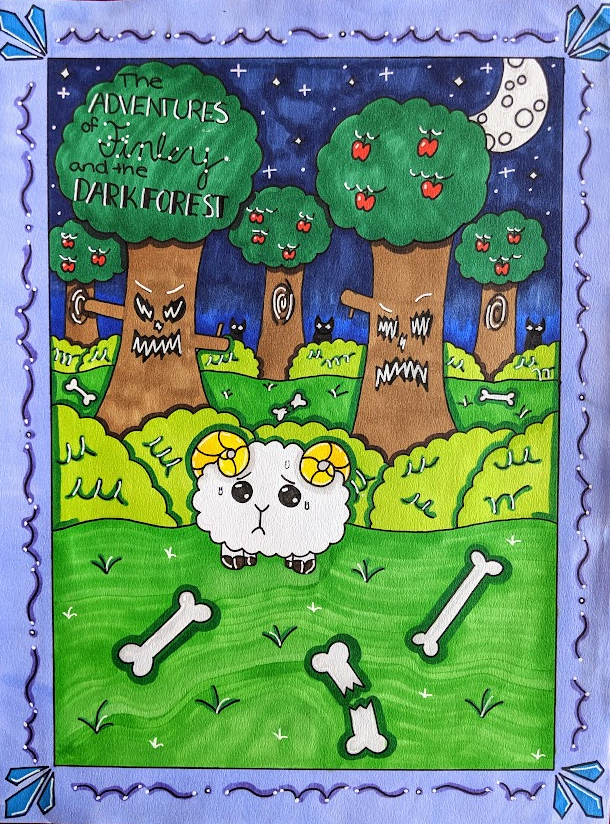

Torn Paper Animals
I can create an animal using torn paper.
I can demonstrate value scales to make my art look 3D.
Objectives:
Students will show 3 different value scales in their work.
Students will use at least 3 different types of paper in their design.
Students will demonstrate excellent craftsmanship.
Essential Questions:
What is “value” in art?
How do artists use value scales to make objects look 3D?
How do we use different colors of paper to make a realistic collage?
Students will show 3 different value scales in their work.
Students will use at least 3 different types of paper in their design.
Students will demonstrate excellent craftsmanship.
Essential Questions:
What is “value” in art?
How do artists use value scales to make objects look 3D?
How do we use different colors of paper to make a realistic collage?
Vocabulary:
Value scale, Collage, Craftsmanship
Value scale, Collage, Craftsmanship
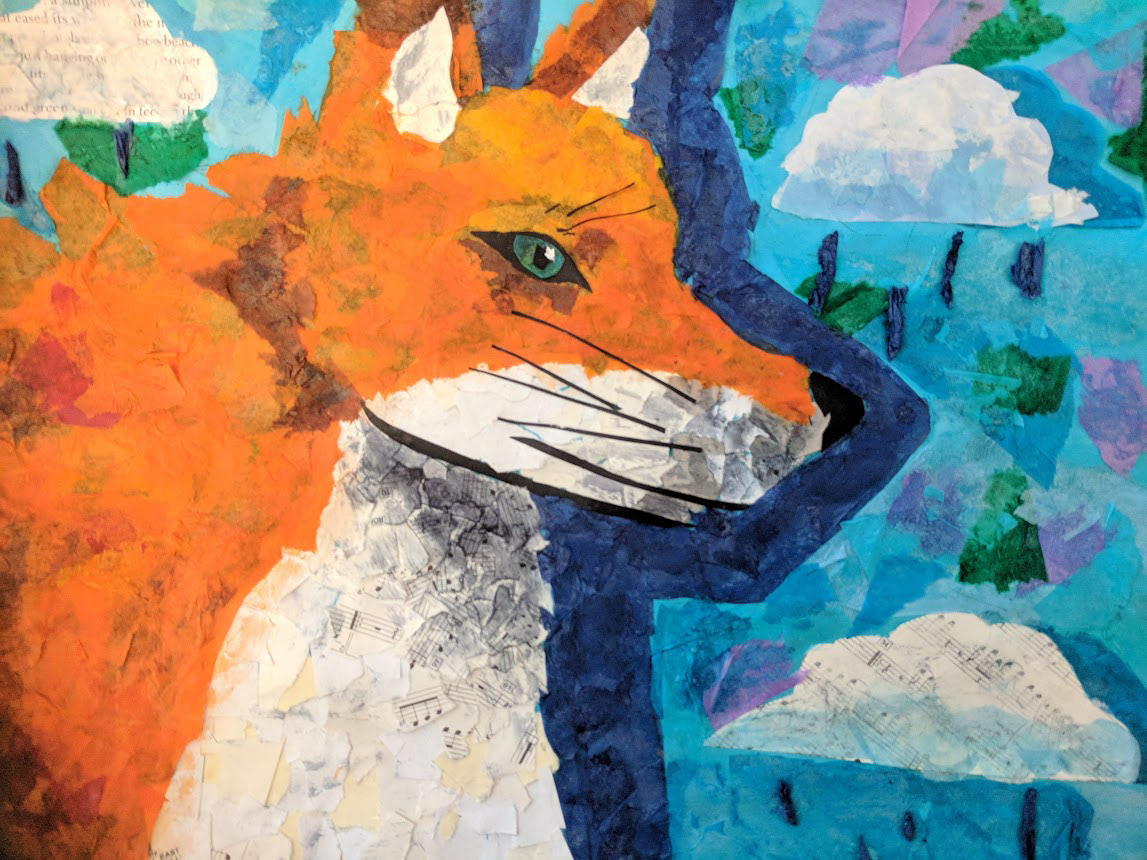
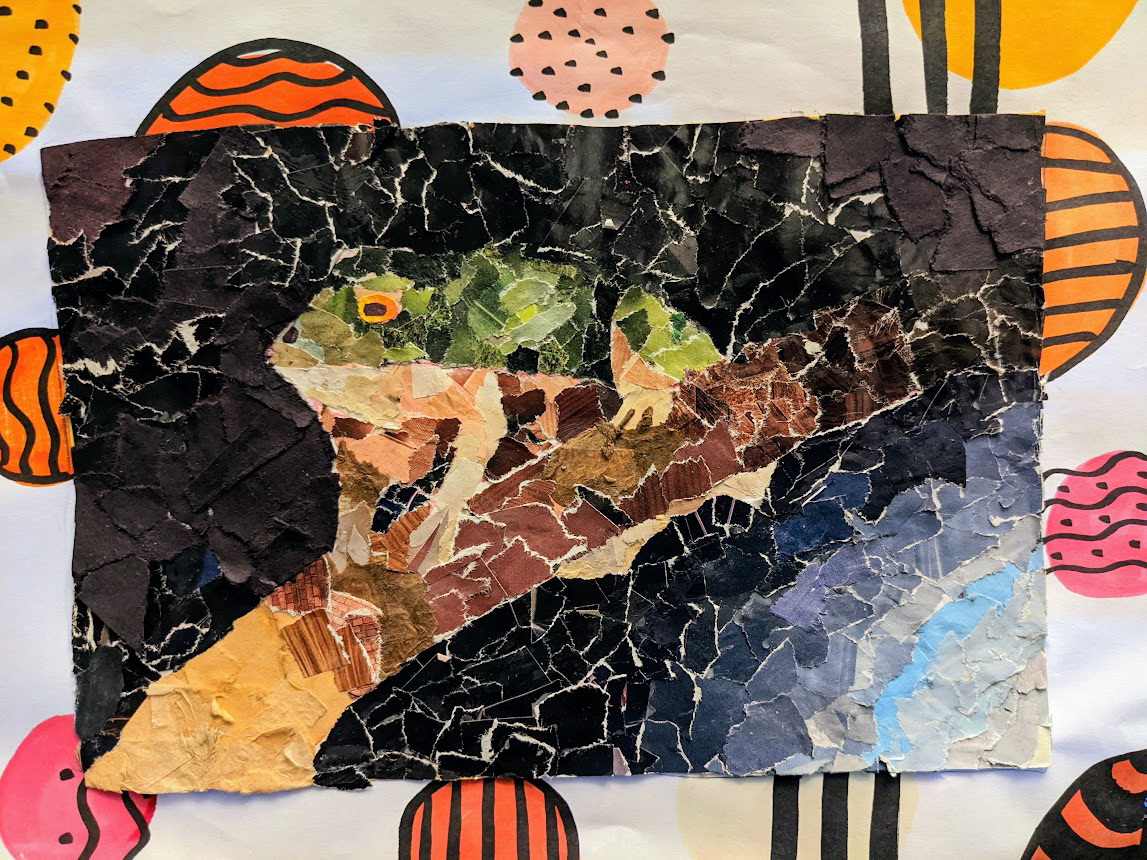

Plaster Cultural Masks
I can create a plaster mask.
Objectives:
Students will explore masks from 3 different cultures.
Students will use plaster to create a mask.
Essential Questions:
How to different cultures use masks in different ways?
What elements are incorporated into each mask?
How do we use plaster to make masks?
Vocabulary:
Mask, Plaster, Day of the Dead Masks, Chinese Opera Masks, Kwakwaka’wakw Masks, Transformation Masks
Students will explore masks from 3 different cultures.
Students will use plaster to create a mask.
Essential Questions:
How to different cultures use masks in different ways?
What elements are incorporated into each mask?
How do we use plaster to make masks?
Vocabulary:
Mask, Plaster, Day of the Dead Masks, Chinese Opera Masks, Kwakwaka’wakw Masks, Transformation Masks

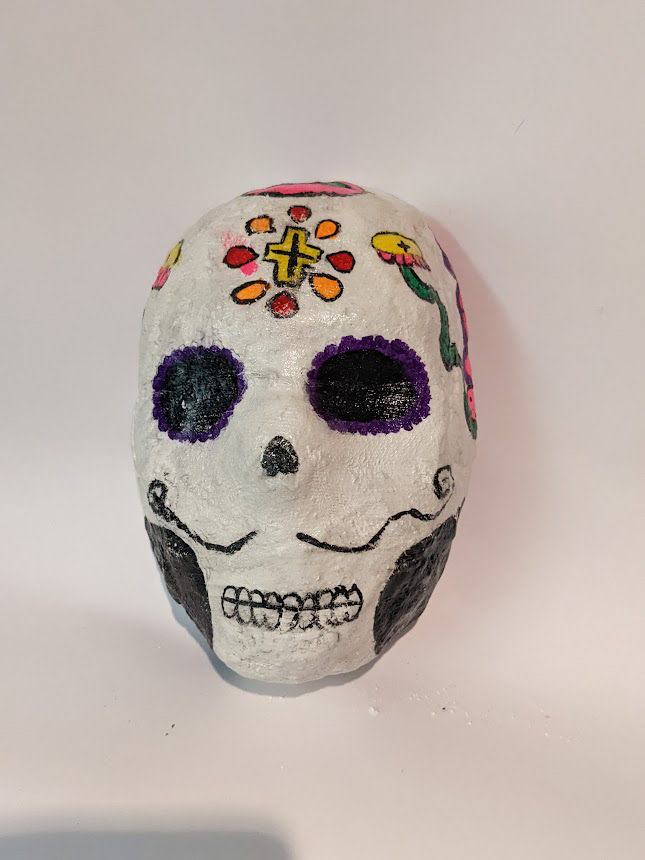
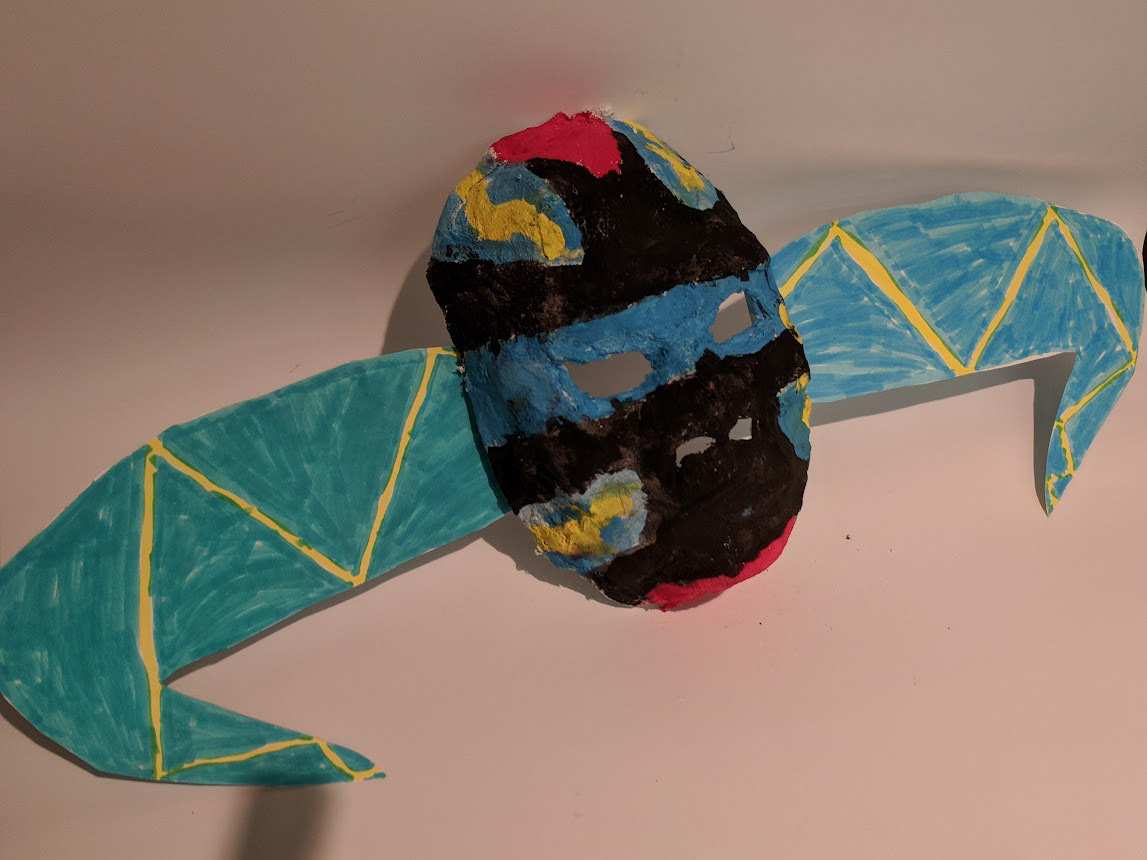
Faith Ringgold Storytelling Quilts
I can create a mixed media storytelling quilt.
Objectives:
Students will study the work of Faith Ringgold and her book Tar Beach.
Students will create a mixed media storytelling quilt.
Students will use visual storytelling techniques to depict a memory or future dream.
Students will study the work of Faith Ringgold and her book Tar Beach.
Students will create a mixed media storytelling quilt.
Students will use visual storytelling techniques to depict a memory or future dream.
Essential Questions:
What is Faith Ringgold known for?
How do artists use visuals to tell a story?
How can we turn markers into watercolor?
Vocabulary:
Storytelling Quilt, Visual Storytelling, Repetition
What is Faith Ringgold known for?
How do artists use visuals to tell a story?
How can we turn markers into watercolor?
Vocabulary:
Storytelling Quilt, Visual Storytelling, Repetition
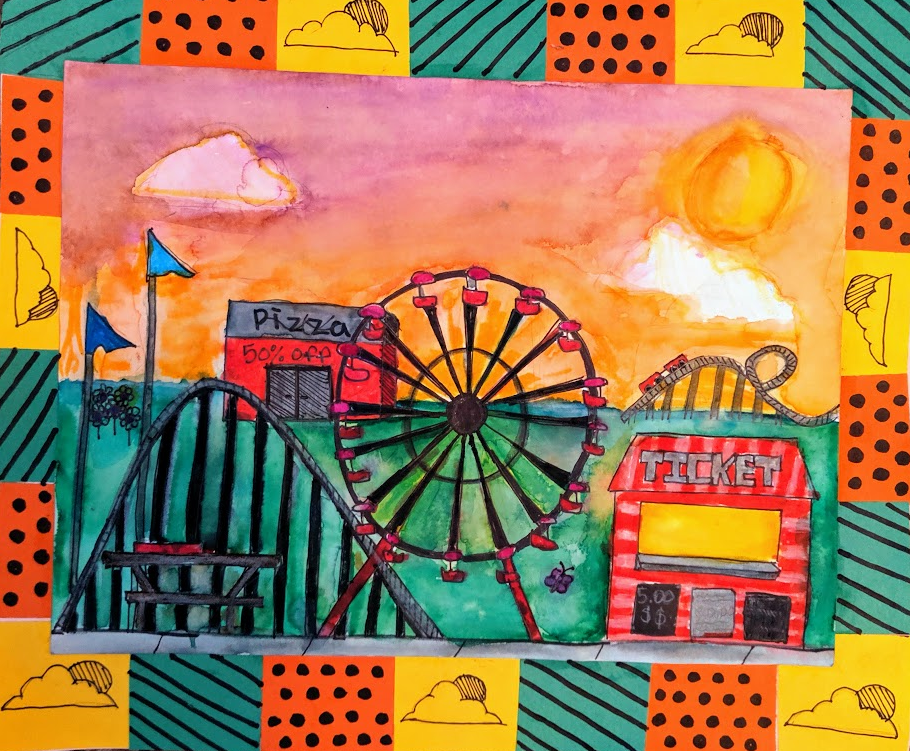

Collaborative Paintings
I can use a grid to create collaborative art.
Objectives:
Students will create a painting using value scales.
Students will collaborate to create a single piece of art.
Essential Questions:
What is a mural?
How to artists use grids to collaborate?
How do we make sure our artwork looks unified and cohesive?
Vocabulary:
Mural, Value, Grid
Students will create a painting using value scales.
Students will collaborate to create a single piece of art.
Essential Questions:
What is a mural?
How to artists use grids to collaborate?
How do we make sure our artwork looks unified and cohesive?
Vocabulary:
Mural, Value, Grid

The advanced drawing and painting class created their own custom design to make a 10-foot (3 meter) long mural. Each letter represented a different facet of our school community.

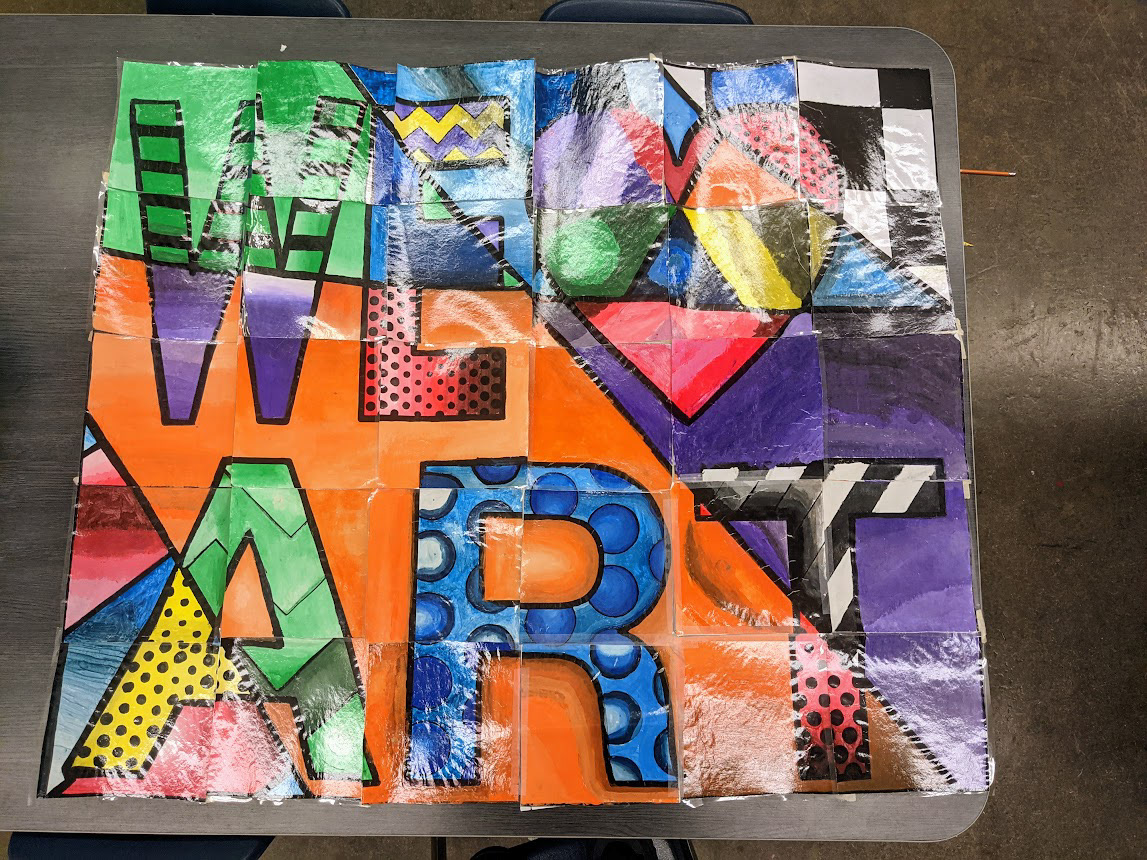
Georgia O'Keeffe Watercolor Flowers
I can paint an abstract flower.
Objectives:
Students will study the work of Georgia O’Keeffe.
Students will create a large-scale abstract flower.
Students will learn 6 watercolor techniques and demonstrate at least 3 in their work.
Students will study the work of Georgia O’Keeffe.
Students will create a large-scale abstract flower.
Students will learn 6 watercolor techniques and demonstrate at least 3 in their work.
Essential Questions:
What is Georgia O’Keeffe known for painting?
What does abstraction mean?
How do we create different watercolor techniques?
What is Georgia O’Keeffe known for painting?
What does abstraction mean?
How do we create different watercolor techniques?
Vocabulary:
Abstraction, Scale, Watercolor techniques: wash, wet on wet, dry brush, dabbing, salt, and rubbing alcohol
Abstraction, Scale, Watercolor techniques: wash, wet on wet, dry brush, dabbing, salt, and rubbing alcohol
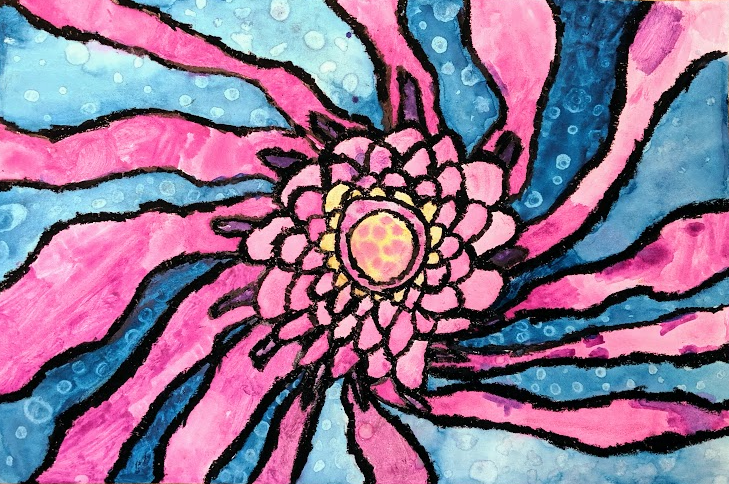

Paper Mache Alebrijes (Oaxacan Wood Carvings)
I can create an alebrije using paper mache.
Objectives:
Students will study alebrijes (Oaxacan wood carvings).
Students will create an animal sculpture demonstrating sculpture in the round.
Students will demonstrate at least 7 patterns on their work.
Essential Questions:
What is an alebrije?
What is sculpture in the round?
How do we build using newspaper and paper mache?
How can we create intricate patterns?
Students will study alebrijes (Oaxacan wood carvings).
Students will create an animal sculpture demonstrating sculpture in the round.
Students will demonstrate at least 7 patterns on their work.
Essential Questions:
What is an alebrije?
What is sculpture in the round?
How do we build using newspaper and paper mache?
How can we create intricate patterns?
Vocabulary:
Alebrije, Sculpture in the round, Additive sculpture, Paper Mache
Alebrije, Sculpture in the round, Additive sculpture, Paper Mache
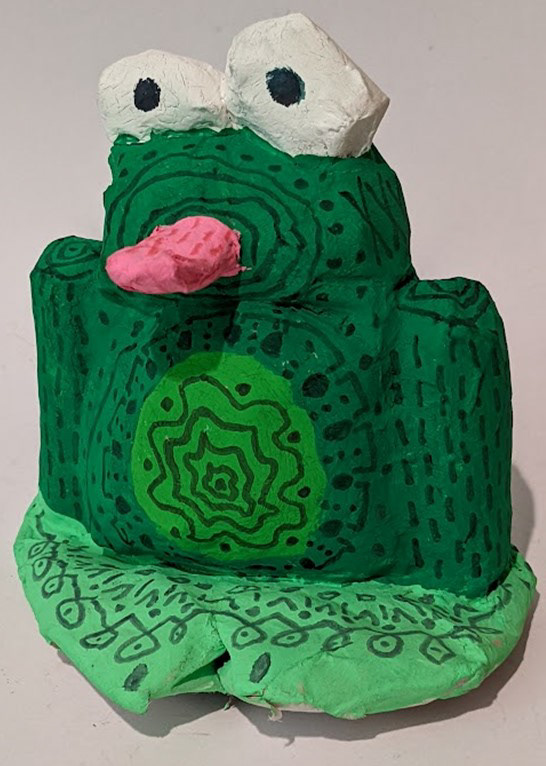
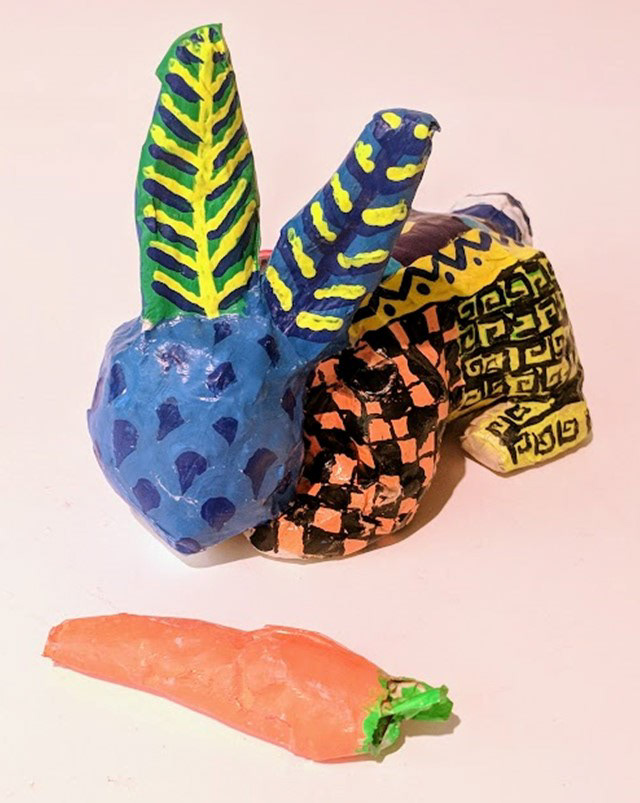
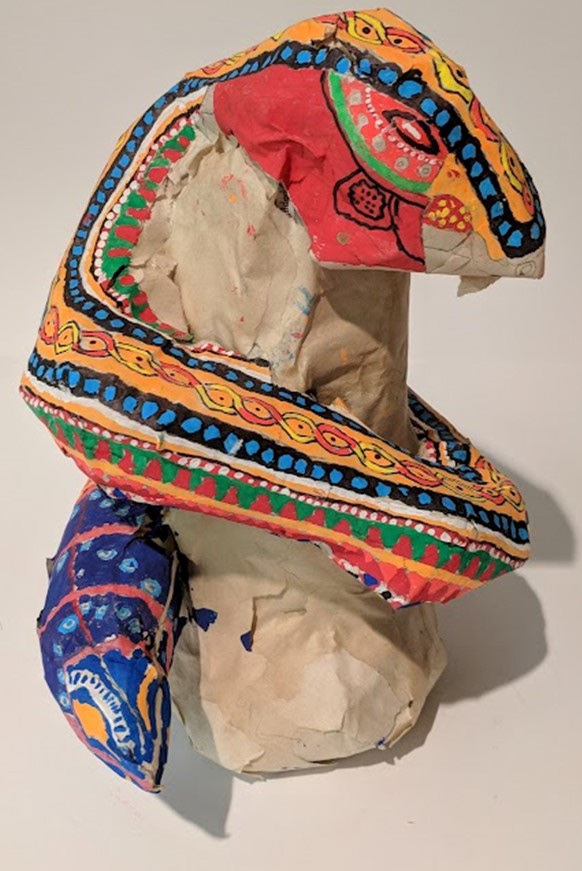
Charcoal Pumpkin Still Life
I can use charcoal and value scales to create a still life.
Objectives:
Students will demonstrate a 7-step value scale using charcoal.
Students will learn how to turn a circle into a sphere using value scales.
Students will demonstrate a 7-step value scale using charcoal.
Students will learn how to turn a circle into a sphere using value scales.
Essential Questions:
What is a value scale?
How do artists use value scales to make their art look realistic?
How do we use value scales to show volume and turn circles into spheres?
What is a value scale?
How do artists use value scales to make their art look realistic?
How do we use value scales to show volume and turn circles into spheres?
Vocabulary:
Value, Tint, Midtone, Shade, Light Source
Value, Tint, Midtone, Shade, Light Source

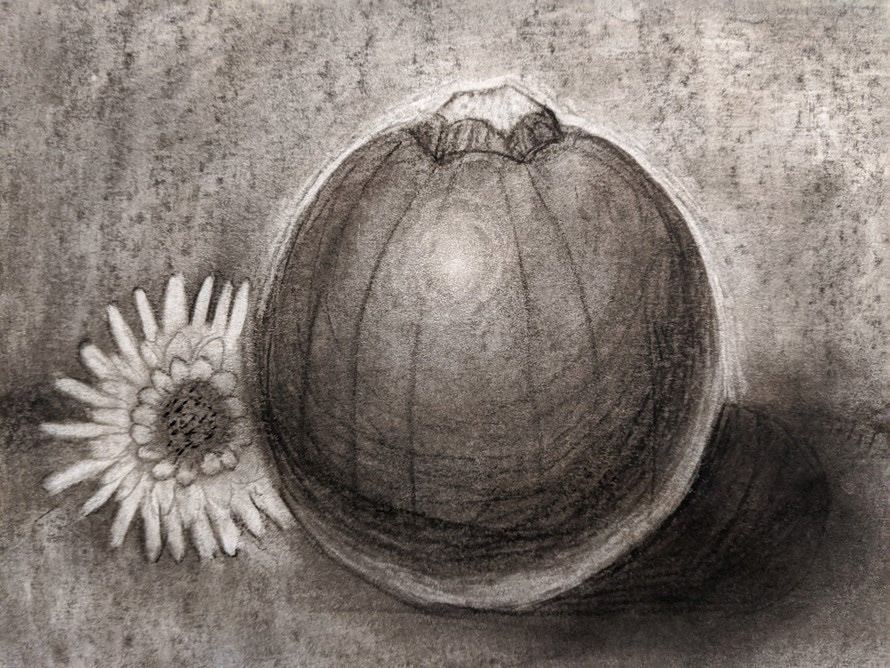
Watercolor Seascapes
I can create a seascape showing emphasis.
Objectives:
Students will create a seascape with an animal popping out of the frame.
Students will learn 10 watercolor techniques and use at least 5 in their work.
Essential Questions:
What is a seascape?
What is emphasis and how do artists use it in their work?
How do we create using different watercolor techniques?
Students will create a seascape with an animal popping out of the frame.
Students will learn 10 watercolor techniques and use at least 5 in their work.
Essential Questions:
What is a seascape?
What is emphasis and how do artists use it in their work?
How do we create using different watercolor techniques?
Vocabulary:
Seascape; Emphasis; Watercolor Techniques: wash, wet on wet, dry brush, dabbing, salt, rubbing alcohol, plastic wrap, rice, splatter, sponge.
Seascape; Emphasis; Watercolor Techniques: wash, wet on wet, dry brush, dabbing, salt, rubbing alcohol, plastic wrap, rice, splatter, sponge.
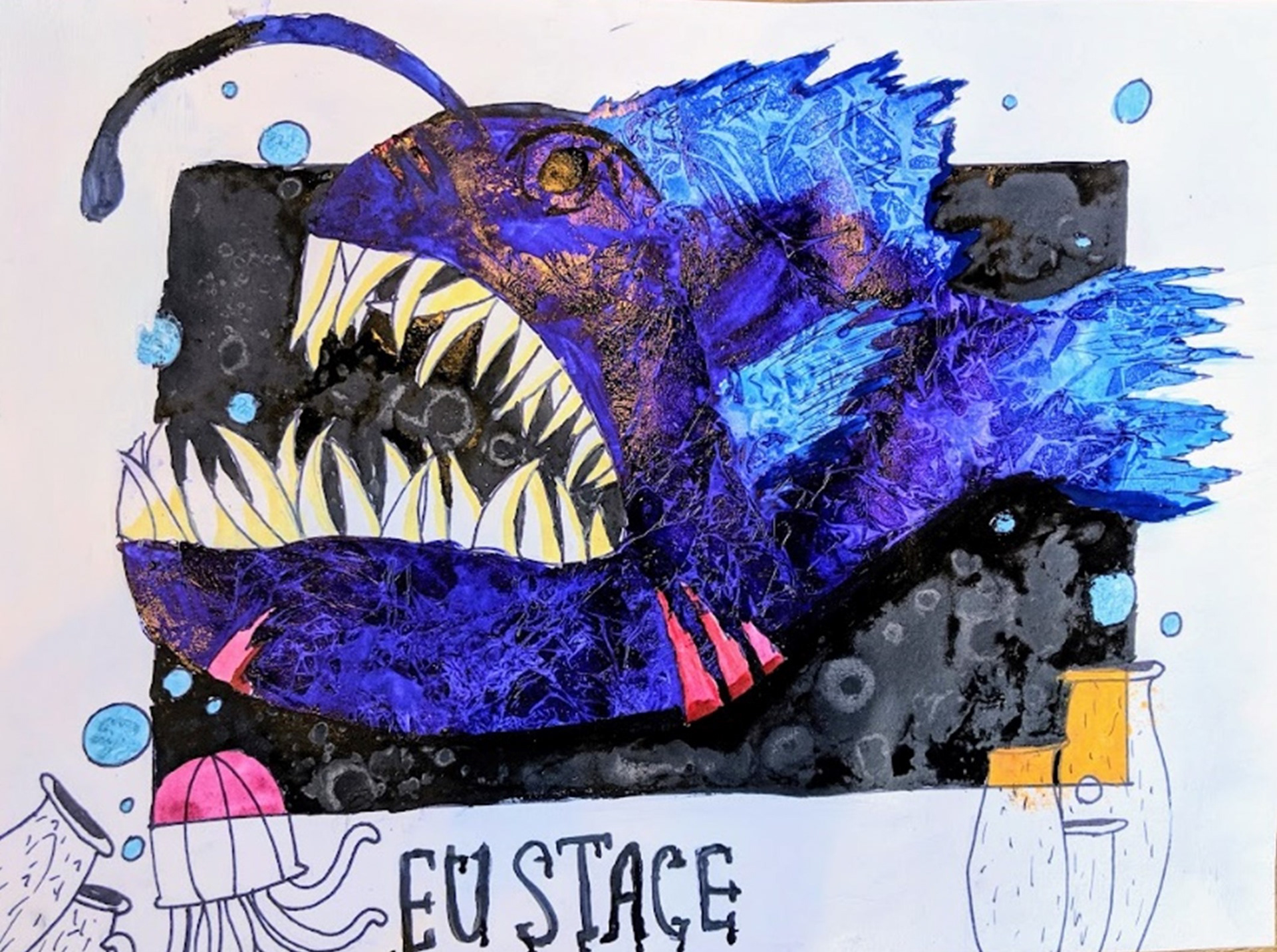
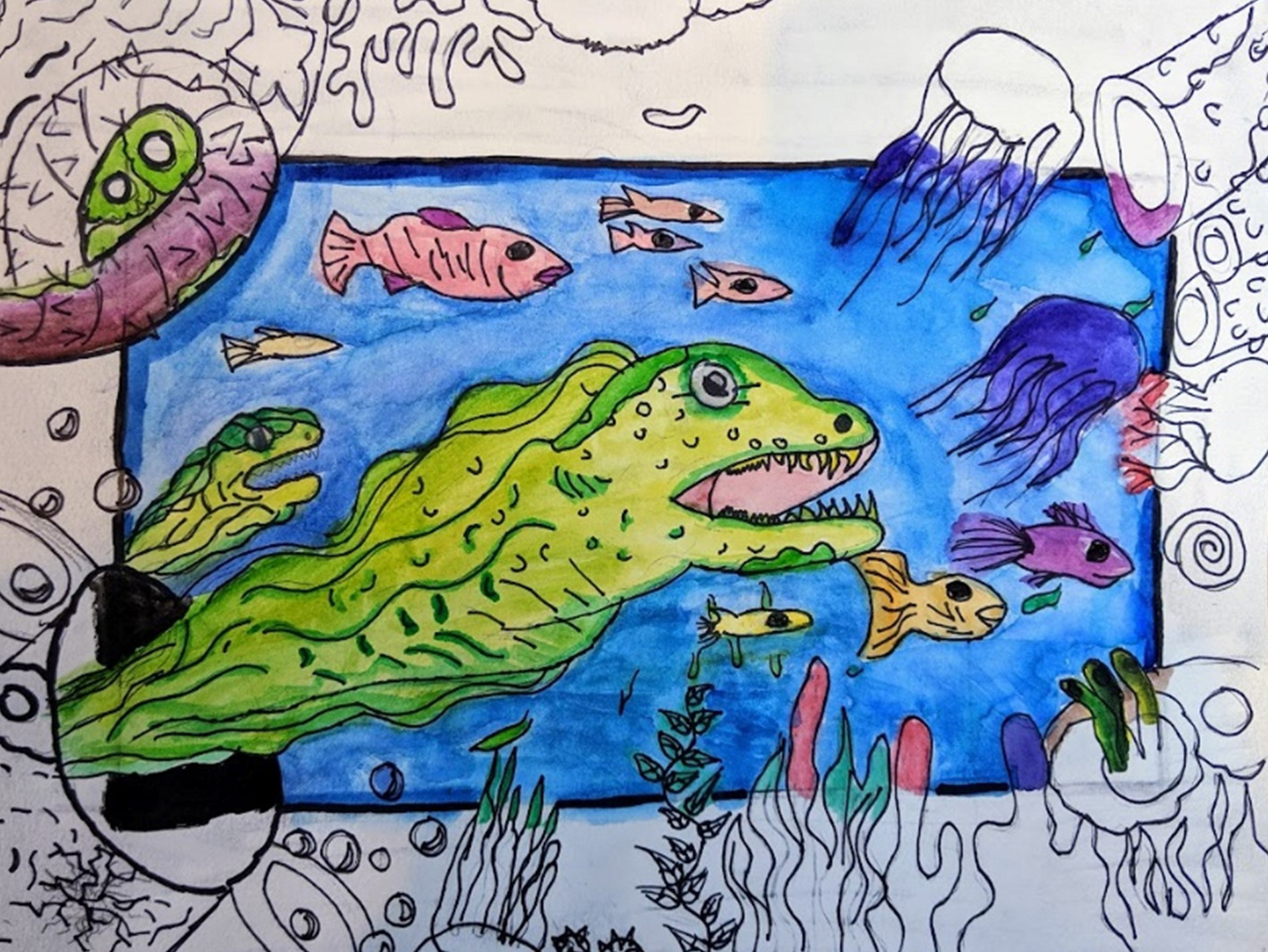
Chuck Close Gridded Portraits
I can create a portrait using the grid method.
Objectives:
Students will study the work of Chuck Close.
Students will create a portrait using the gridding method.
Essential Questions:
What is Chuck Close known for creating?
What is the grid method, and how to artists use it to draw?
How do we use contour line and color to stylize a portrait?
Students will study the work of Chuck Close.
Students will create a portrait using the gridding method.
Essential Questions:
What is Chuck Close known for creating?
What is the grid method, and how to artists use it to draw?
How do we use contour line and color to stylize a portrait?
Vocabulary:
Grid, Proportion, Contour Line
Grid, Proportion, Contour Line
*As portraits can be especially tricky, below are examples of tiers of differentiation of this technical project based on skill level.
